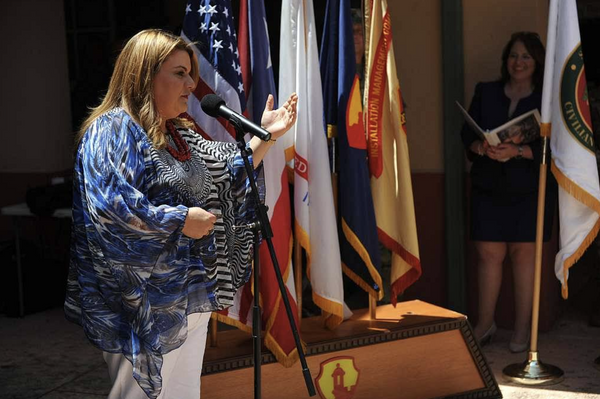Rocketing food prices are showing no signs of slowing down. In the latest hit, the price of a 500g tub of Lurpak has rocketed to £9.
Countless household items are more expensive than they've been in decades causing thousands of families to make cuts backs or find cheaper alternatives. One shopper decided to make his own butter.
Manchester Evening News writer Ben Arnold took to the kitchen to whip up a batch of homemade butter. He popped to Morrisons to buy a tub of double cream, 600ml to be precise, for £2.10, thinking it would produce a similar weight of butter.
The kit…
To make butter, all you need is your pre-bought 600ml of double cream, a large mixing bowl, a smaller mixing bowl, an electric whisk, a sieve, some salt, a piece of greaseproof paper and a clean tea towel or a piece of muslin. So in all likelihood, you will have most of this, and if not, you can borrow some of the other bits, meaning the overheads are immediately low.
The method…
First, pour your cream into the bowl, fix your whisking things (technical term) into your mixer, and beat. I recall my mum always warning me when she got me to whip cream to be careful, because ‘whip it too much, and you’ve got butter’. So obviously, this is all extremely liberating. I got at it at full speed.
I zipped past soft peaks and then powered into stiff peaks in a blur, probably about three minutes or so. At which point, the cream starts to look a lot like scrambled eggs. Or barf. Then nothing happens for a bit. Well, you think nothing’s happening, but actually, science says otherwise.
What’s going on here is that the lipids - the milk fats - are being vibrated together. While this is happening, the lipids are starting to get stabilized by their own fat molecules. This means that they should start to clump together, which they do. Then after about another three or four minutes, you start to see the clumps separate from the water molecules.
What’s then left is the buttermilk and the butter clumped together. Once this has happened, your butter is almost ready. Set your smaller mixing bowl up in the sink, and tip everything into your sieve, collecting the buttermilk in the bowl below, and the butter in the sieve.
Once all the buttermilk has drained off, tip the butter from the sieve onto your clean tea towel or muslin. Then gather the corners and squeeze the butter over your bowl of buttermilk. This both forms the butter into a ball, and squeezes out the remaining buttermilk.
Once you’ve done that, unwrap the tea towel, and you’ve got your butter. Give it a quick rinse under a cold tap, just to get rid of any remaining buttermilk, and dry it a bit on your tea towel. So that it’s not bland and boring, put it back in your cleaned and dried mixing bowl and add some salt to taste.
At this stage, you could even add some herbs or spices if you wanted (or posh flaky sea salt) to make upscale butter, or just normal table salt if you don’t.
Then get a sheet of greaseproof paper, put the butter on it, roll it up like a sausage, twist the ends up like a Christmas cracker, and fridge it.
The costs…
We have a box which - depressingly - tells us in actual money how much energy we’re using at any one time. And it’s probably why we’re now hardly ever using the tumble dryer anymore. Judging by the cost increase, it looked like it was about 2 or 3p in electric usage, but this is by no means exact. The price of the salt is probably negligible.
But here comes the kicker… 600ml of double cream cost £2.10 and yielded me only 285g of butter. 250g of Aldi’s basic butter costs £1.75. Lidl's is cheaper still at £1.72. So, with the help of some very hard sums, mine cost £1.84 compared to Aldi's. Plus a couple of pence for electricity. It's little wonder that they're an international supermarket brand, and I'm just a disappointed man in his kitchen.
You do get some free buttermilk, of course. But whether that’s a good thing or not depends whether you’ll use it. It’s good for marinating chicken wings in, or for making pancakes with, though the run-off isn’t as thick as what you’d get from a tub of buttermilk from the shops, so I couldn’t speak to its effectiveness in either situation. And I accidentally poured mine down the sink anyway, like a dunce.
So in all, making my own butter was not a very-clever-indeed cost saving exercise after all. Aldi’s cheapest butter-style spread is Greenvale Beautifully Buttery, which costs 85p for 500g. It’s not pure butter, but it’s basically a quid cheaper than my effort, and for loads more. You could even go old school and just buy some lard. That’s only 35p. Not advised.
While Lurpak’s 1kg tub of spreadable is indeed a pricey £9 at Waitrose (though it's also in the region of £7.25 if you shop around), it’s worth noting that four 250g packets of Aldi’s Specially Selected West Country Butter (aka 1kg) would cost £7.40, and Lurpak spreadable is a premium product.
Whatever the case, making your own butter probably won’t save you much money. In fact, it might cost you money. But it was quite relaxing. So there’s that. Oh, and it tastes nice.







